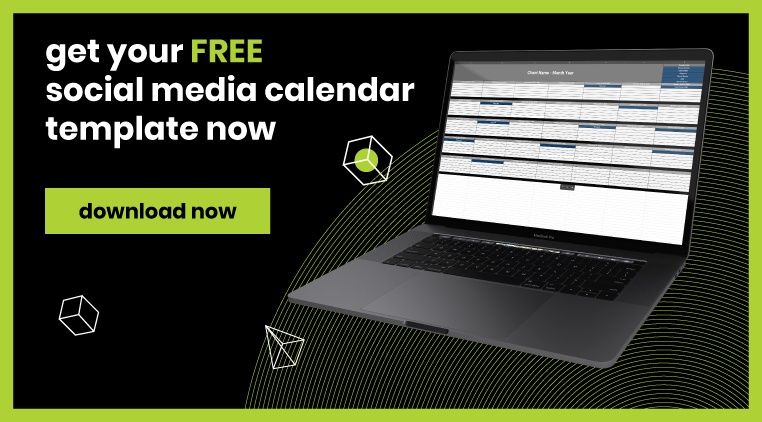Just like your identity makes you “uniquely you”, your brand identity is the special recipe of your business that sets you apart from every other business on the block. Why do you need to design one you may ask. Well, because it’s what shapes your company.
But what exactly is brand identity and what does it have to do with design? How do you shape a strong brand identity that takes your business to the next level?
There are too many questions running through your head right now, but stay with me. In this blog article I will guide you through all the information you need to create a successful brand identity.
Before we go over the 7 key elements of brand identity design, we need to align on a few key definitions. First of all…
What is a brand?
The word "brand" is used pretty loosely these days. For example, people might use the word "brand" to talk about logos, though a logo is just one part of a brand. It's a symbol that represents a deeper emotional tie.
Seth Godin has a great definition of brand that addresses this point: "A brand is the set of expectations, memories, stories and relationships that, taken together, account for a consumer's decision to choose one product or service over another."
A logo, packaging, typography, style and personality all represent a brand, along with customer service, price, product quality, and corporate responsibility, but a brand is a bit more intangible. It's emotional, visual, historical, and human. It's an experience that separates different products and services, in our days quality is often comparable or exactly the same.
 What is brand identity?
What is brand identity?
Brand identity is the face of a brand. As discussed in the above section, a brand is an emotional and even philosophical concept, while brand identity is the visual component of a brand that represents those bigger ideas.
Brand identity includes logos, typography, colors, packaging, stationery, imagery and messaging, and it complements or even reinforces a reputation of a brand. Brand identity attracts new customers to a brand while making existing customers feel at home. It's both outward- and inward-facing.
It's important that brand identity be consistent. Because it's representing and reinforcing the emotions of a brand, the message portrayed by brand identity components needs to be clear, and it needs to be the same no matter where it's displayed.
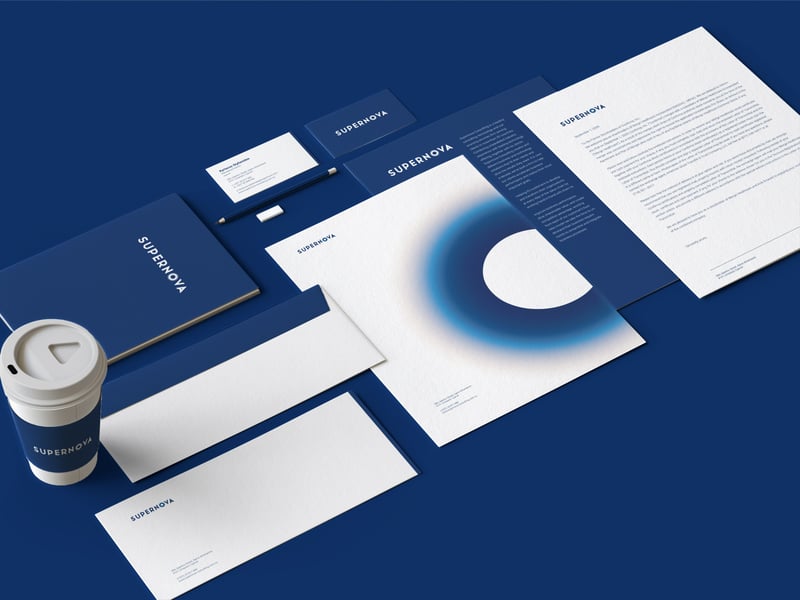
Brand identity design crafted for our client Supernova
So what is brand identity design, and how do you create a brand identity?
Basically, it's the brand identity applied. Brand identity design is the actual process of creating all the components mentioned above, the logo, color palette, typography, etc.
With these definitions in mind, what follows is an overview of the 7 key design elements you need to create for a strong brand identity, consistent, and attractive.
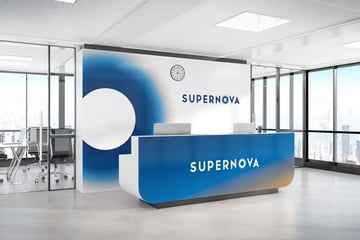

1. Clear brand purpose and positioning
The first part of creating a brand identity is to determine what your purpose and positioning is. The brand purpose is the big reason for your existence. Brand positioning is the naming of who your product is for and why your product is a better option than the competitors. Defining these will inform your strategy as you create a logo, decide on a color palette, etc. A process called Purpose, Position and Personality is useful for answering these questions.
According to Arielle Jackson, startup founder and Google veteran: "Your purpose is how you want to change the world for the better." Jackson also recommends this diagram as a guide for determining your purpose:

Jackson explains the diagram this way: "In one circle, you have cultural tension. This is what is happening in the world that's relevant to you. In the other circle, is your brand's best self. This is what your company delivers at its prime," says Jackson. "The intersection of these two areas is... 'the big ideal' - or your purpose."
For a great example of a succinct, tangible corporate purpose, check out this statement from Apple:
"Apple's 100,000 employees are dedicated to making the best products on earth, and to leaving the world better than we found it."
Brand positioning is the process of making the purpose actionable. By naming your target customer and differentiating yourself from the competition, you lay the foundations for your brand to accomplish its purpose.
2. Market research - Customer Personas
A brand's purpose and positioning can be informed, at least in part, by market and customer research. To understand the “cultural tension” (described above), research is crucial.
One of the best ways to conduct market research is to simply talk to people, make surveys and create customer personas.
Good market research can also help you determine who your main “customer personas” are, a term which is slightly a different concept than "target customers". Your customer persona goes beyond just defining what problem a customer has, details such as professional and personal traits or habits of your customers. Defining these traits will help you know what kind of a personality your brand should have to be appealing to customers.
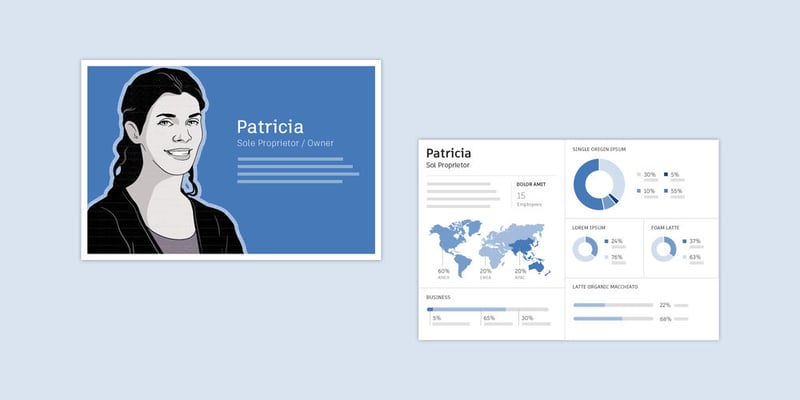
3. Likable brand personality
As a university student I've heard several times the question "If your brand were a person, what would they be like?" It might be a bit cliché, but it's a good way to think about brand personality.
Brand personality is an important thing to consider. That personality will come through in every part of your brand identity if you get it right. Brand personality must be consistent, it has a huge impact on the tone of voice used in your marketing materials and other communications. If your brand personality isn’t consistent with who you are, customers won’t buy into it.
4. Create a memorable logo
Which came first - the logo or the brand? A clear brand should come first, followed by a logo that matches, compliments, and enhances that brand.
Your logo is central to your brand identity design. It's the piece of your brand identity that will be exposed to people the most. It needs to line up with all the other elements of your brand identity, as well as the broader emotional appeal of your brand.
For example, take a look at this logo:

What do you think about it? It expresses instantly a thought of nostalgia, magic, laughter, or something similar. The playful script flows with creativity and fun, and that matches with the overall brand Disney has established.
To increase your chances of having a memorable logo, hire a professional designer in order to make sure that your logo encourages a strong emotional response, in my opinion go for a simple look logo. Take a look at the logos of the world's top 3 brands:


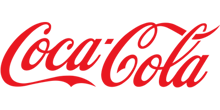
They're simple and instantly recognizable. Even Coca-Cola's logo, the most complex of the three, is just a straight line of text in a single font, with no graphical elements surrounding it.
When a logo is simple, it becomes an open canvas customers can fill with positive experiences they have with the brand. Also, the simpler the logo, the easier it is to scale between mediums such as digital advertising and the more traditional print advertising such as flyers or brochures.
A logo needs to be flexible enough to look great on a huge billboard or as a tiny social media icon. Simplicity is helpful here as well.
5. Attractive color palette
Directly related to logo design is the color palette. This should also be simple, with only 1 to 3 primary colors (though Google got away with 4). Knowing a bit about the emotions conveyed by certain colors can help you select the right ones.
A lot of color psychology is intuitive, like blue expressing calm and red and yellow expressing passion and energy. Depending on the tint or shade of a color you use, that emotion can be adjusted. A tint is the color mixed with white, making it lighter, and a shade is the color mixed with black, making it darker. A lighter tint of blue conveys tranquility, while a darker shade of blue often conveys trust, an effect that many economic organizations use in their color schemes.
Brands should have only a few primary colors, but you can also select secondary colors to be used alongside your primary colors in some of your materials. Selecting a few additional colors helps your brand stay exciting but still on brand.
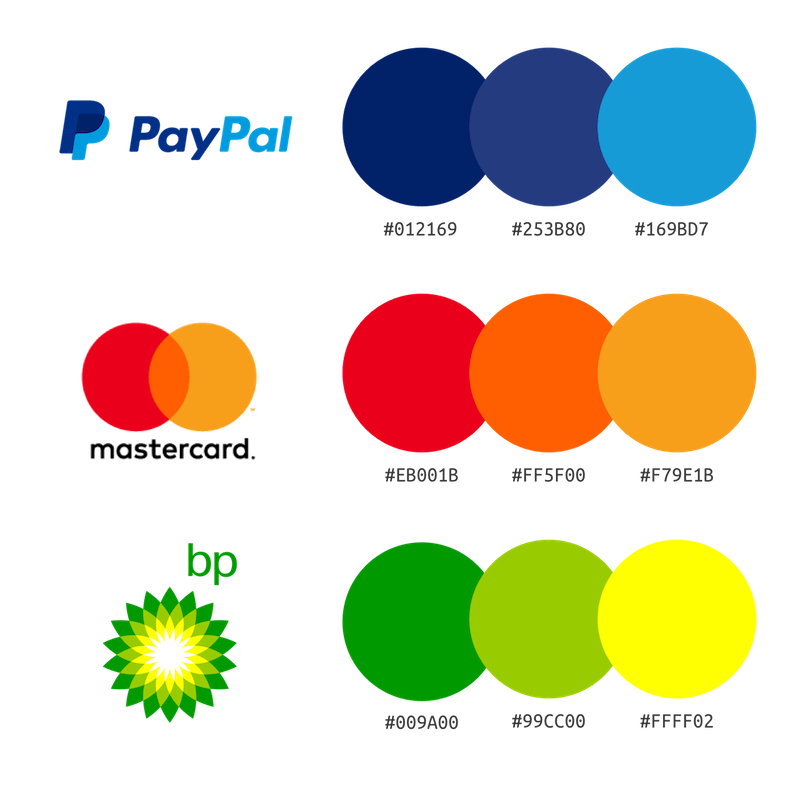
6. Professional typography
As a designer stressing about finding just the right font sometimes leads others to designate me a "typography nerd," but I always come out ahead when I pick or design a font that works in harmony with a logo and colors.
Fonts are powerful. The most famous fonts are recognizable even when taken out of context. Most important is to find a single primary typeface to lead your brand design, and it should work well with your logo and your color palette. It should also be simple like the rest (logo and color palette).
- If you'd like to know more, this beginner's guide to typography is helpful. It covers a few best practices:
- Don't use fancy fonts (especially if you don't have the experience or knowledge to use them well).
- Don't avoid default fonts. They're readable, and you can set the typeface differently if you want it to stand out.
- Don't mix more than two font families at a time.
- Do mix contrasting fonts (such as a serif and a sans-serif).
- Choose the right font size and line length for legibility.
- Align your text to the left. A ragged right is easy to read.
- If it's over 60 characters per line, it's okay to justify it. However, avoid hyphenation.
- Don't use all-caps to emphasize text.
Of course, all of these rules can be broken if you know how to do it effectively. The key is understanding why the best practices work, so you can justify bending the rules for your brand identity.
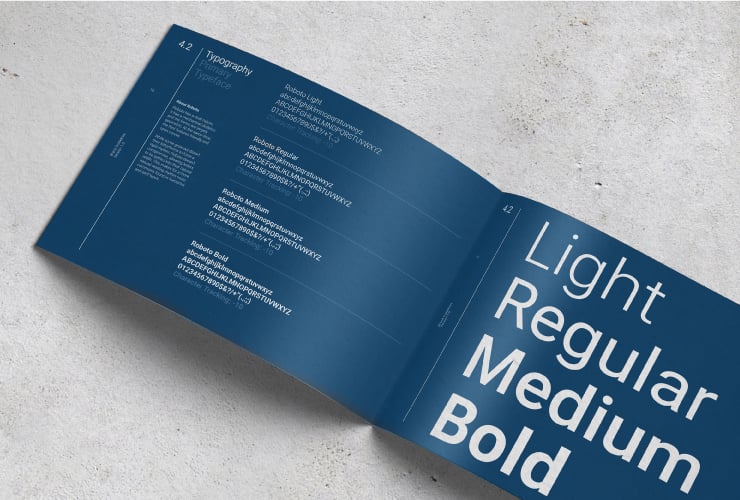
7. On-brand supporting graphic elements
Since we live in a multimedia world, the final step in creating a brand identity is an extended visual language with supporting graphics, design assets, icons and photographs.
Take a look at Google's Visual Assets Guidelines to see how they carefully explain their take on icon design. They cover a whole range of brand design considerations:
- A reductive (or "flat") approach
- A preference for geometric shapes
- Icons always face front
- Straight, hard shadows as opposed to curved, soft ones
- Standard background colors
- Icons align to the pixel grid
- Icon padding according to shape
- Because of Google's close attention to their extended visual language, when you see a Google icon, you know it's a Google icon.
Creating a brand guide that addresses multiple elements of brand design will help having a consistent and unique gallery of ad materials in the future. This ensures that every email newsletter, social media post, or promotional brochure is consistent with the same familiar standards.
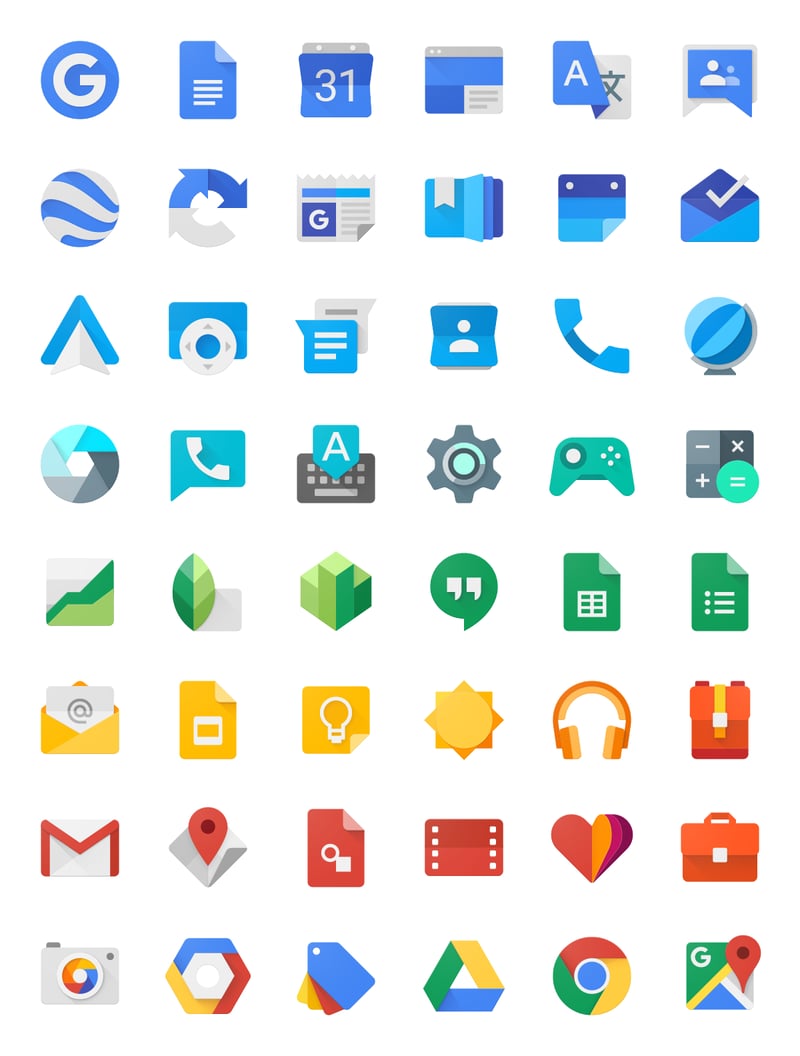 Next steps
Next steps
A confident brand and a strong brand identity will add clarity to everything you do. And though some changes may be necessary in the future, stay consistent so that your brand is the one that comes to mind when someone has a problem you can solve.

